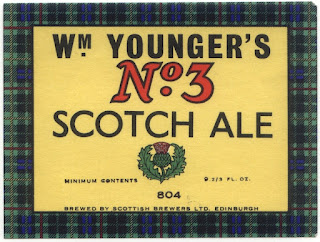After a reasonable kip, considering how ill I feel, I go to the bog at 7:30 feeling shit. And for some reason my nose starts bleeding. And doesn't want to stop. I'd planned another couple of hours in bed. But, as I don't fancy doing the red harvest thing again, I stay up. When it's under control, it's not worth going back to bed.
The breakfast buffet isn't bad. Scrambled eggs, but no bacon. Just some weird-looking sausages. I can give those a miss. The cheese is way better and there are several types of it. I get some down, along with a couple of coffees and orange juice, despite feeling really, really shit. Being ill is so much fun when you're abroad and alone.
 |
| A breakfast of scrambled egg, covered in triangular slices of cheese, coffee and orange juice. |
Best breakfast so far. Though the fruit selection wasn’t up to Brazilian standards.
As there are loads of chemists around, I decide to look up cold medicine: "medicina para el resfriado". Armed with this knowledge, I head to the nearest chemist. Where I manage to score some decent cold medicine.
 |
| An impressive old building on Lavalle. |
Then walk down Lavalle looking for somewhere to get a bite to eat and something to drink. It seems to be the main shopping drag. With some impressive old buildings, all plaster ornaments, balconies and balustrades. Accompanied by a depressing number of empty units. As well as quite a few café-bars and restaurants. I’m after the former, wanting to hang around, not just eat.
Fairly randomly, I settle on Mercado del Centro. Where I order an empanada and a caipirinha. And knock back a couple of cold tabs. It seems like a fairly traditional place. Old men in caps sip coffee. Groups of workers and shoppers drop in for lunch
 |
| Inside Mercado del Centro. |
After an hour or so and a couple more cocktails, I feel a bit better. Not great, but nearly human. Those cold tablets must be kicking in. I while away a couple of hours sipping on cocktails and watching the locals. And chatting with Mikey on WhatsApp.
“How much is a beer?” Mikey messages.
“6.50 euros for a litre of Stout. And I'm on the equivalent of Calverstraat.”
“6.50 for a litre. ‘kin hell that's cheap.”
Always worth making the effort to piss off Mikey a bit.
“How much are the cocktails.”
“No idea. They weren’t on the menu.”
 |
| Coffee and conversation in Mercado del Sur. |
I leave at 15:30. A bit over €5 a pop, my caipirinhas. I learn from my bill. I can live with that. Cocktails cost a fuck load more in Amsterdam.
More food is what I need. (Starve a fever, feed a cold, that’s what Mum used to say. With the cold I have, feasting would be appropriate.) Feeling like something fishy. Wanting a change from meat.
I wander off the main drag and down some of the small side streets. Lined with tiny shops, parking garages and the odd eatery. Without much luck, initially. It’s all beef, pizza and empanadas. I’m getting pretty frustrated when I spot a little Peruvian place. That'll do. They’re bound to have fish.
 |
| Coya inside. |
It’s not very busy. But also not very big. A couple of middle-aged blokes are getting stuck into big plates of stuff. A tiny waitress eats demurely in a corner. Family members of the owner, with a toddler and baby in tow, chat quietly. I wave and smile at the baby. It’s all very low-key.
The owner suggests that I try an orange alternative to pisco sour. It tastes lovely, but contains so much ice that my brain freezes up. Pretty much exactly what I don’t need. It sets me off coughing again. Which I’m sure the others really appreciate. I’m back to coughing at Olympic level. Damn this cold.
In a radical departure from the usual footie, they're showing videos of Peruvian music on the TV. With performers in very sparkly outfits. Quite showbiz. Most of the music is Cumbia, a personal favourite of mine. I’d always thought of it as a specifically Columbian thing. Though I did learn last year that they have it in Chile, too.
 |
| My fried fish and potatoes. |
The fried fish I order is a massive pile. Far too much, but really nice. I get through about two-thirds of the fish, along with a couple of mouthfuls of the potato underneath it. And all of the pisco I order. When I finish, they're already loading the chairs onto the tables. They clearly aren't opening this evening.
Even though the sun isn't down, it's pretty chilly when I leave. Just like in Chile, late in the afternoon the temperature collapses like me after three hours at an all-you-can-drink bar. (After which, there was the red harvest incident, mentioned above.)
In my room, I chill a little more with my “special” drink. And get in the heavy-duty coughing I didn’t feel comfortable doing out in public. I sound like a Victorian poet in the final stages of consumption. Just without the blood. At least, so far. Apart from this morning.
It's another early night. I don't need to be up that early, but I do need as much sleep as I can get. A long flight tomorrow.
I cough into some rum on the slumber trail.
Mercado del Centro
Lavalle 502,
C1047 AAL, Cdad. Autónoma de Buenos Aires.
Restaurante Turistico Coya
Tucumán 874,
C1049 Cdad. Autónoma de Buenos Aires.




































































































